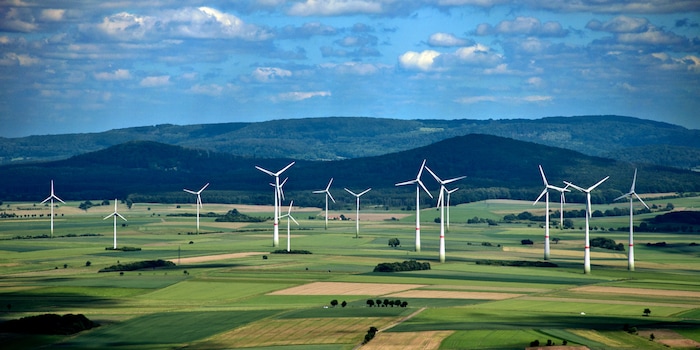
Black rotor blades reduce bird mortality
A field test shows: If a rotor blade on a wind turbine is coloured black, significantly fewer birds apparently have accidents at the turbines. According to the researchers, however, there are even more simple protective mechanisms.
Wind energy is supposed to play a decisive role in the energy transition, but wind turbines have a negative impact on species conservation. This is because birds and bats often die in the rotors. Researchers led by Roel May from the Norwegian Institute for Nature Research have now presented a potential solution: In the scientific journal "Ecology and Evolution", they suggest painting one of the three rotor blades of a wind turbine black. As the team of scientists discovered during a field test, this reduced the mortality rate of the animals by more than 70 per cent.
Studies in a laboratory environment had already indicated that blackened rotor blades protect birds from colliding with wind turbines. May and his team have now tested this hypothesis under real conditions at the Smøla wind farm in Norway. They coloured one rotor blade of each of four turbines black and left the neighbouring four wind turbines unchanged in order to use them as a control group. They then documented the number of birds that died under the wind towers over a period of three years. The result: losses fell sharply, especially among birds of prey such as the white-tailed eagle (Haliaeetus albicilla), by over 70 per cent in total.
The reason is likely to be the increased visibility of the rotors. The black rotor blade leads to a greater contrast effect and reduces the blurred movement of the rotor. This makes it easier for the birds to recognise and avoid the wind turbines. The researchers emphasise that they only tested the possible effect on a relatively small number of wind turbines, "but the experiment ran over a long period of time", write May and his colleagues.
Birds also collide with wind turbine towers
Experts such as Reinhard Klemke, who worked at the Helmholtz Centre for Environmental Research in Leipzig, criticise this very point. The press service "Science Media Centre" quotes him as saying that "the effects observed in such a small sample, even if the study was conducted over a long period of time, can still be purely random". Stephan Barth from ForWind, the Centre for Wind Energy Research at the Universities of Bremen, Hanover and Oldenburg, is of the opinion that the study shows "a credible picture". However, he agrees that the case numbers are still small and that this could lead to statistical scattering - but the authors of the study, led by May, also emphasise this and therefore recommend extending the tests to wind farms elsewhere.
As the Norwegian researchers also report in a press release, painting the tower of a wind turbine would also have had a significant effect. After the scientists had coloured the lower part black, 50 per cent fewer birds died there.
The research group also tested other methods of bird protection - methods that are low cost and require little effort. In a field trial, they installed large lamps that emitted violet and UV light. The birds did fly higher as a result, but only by around seven metres. "That's not much compared to the size of a rotor blade of 40 to 50 metres," says May.
It is not only the appearance of the wind turbines that is decisive, but also their position - especially in places where there are strong updrafts due to the topography. This is because birds of prey use such wind conditions to glide upwards. As part of another project, researchers at the Norwegian Institute for Nature Research have therefore developed a geoinformation system that can determine the wind situation at specific points. This should make it possible to check whether the location of a planned wind farm is compatible with species protection.
Spectrum of science
We are a partner of Spektrum der Wissenschaft and want to make well-founded information more accessible to you. Follow Spektrum der Wissenschaft if you like the articles.
[[small:]]
Experts from science and research report on the latest findings in their fields – competent, authentic and comprehensible.